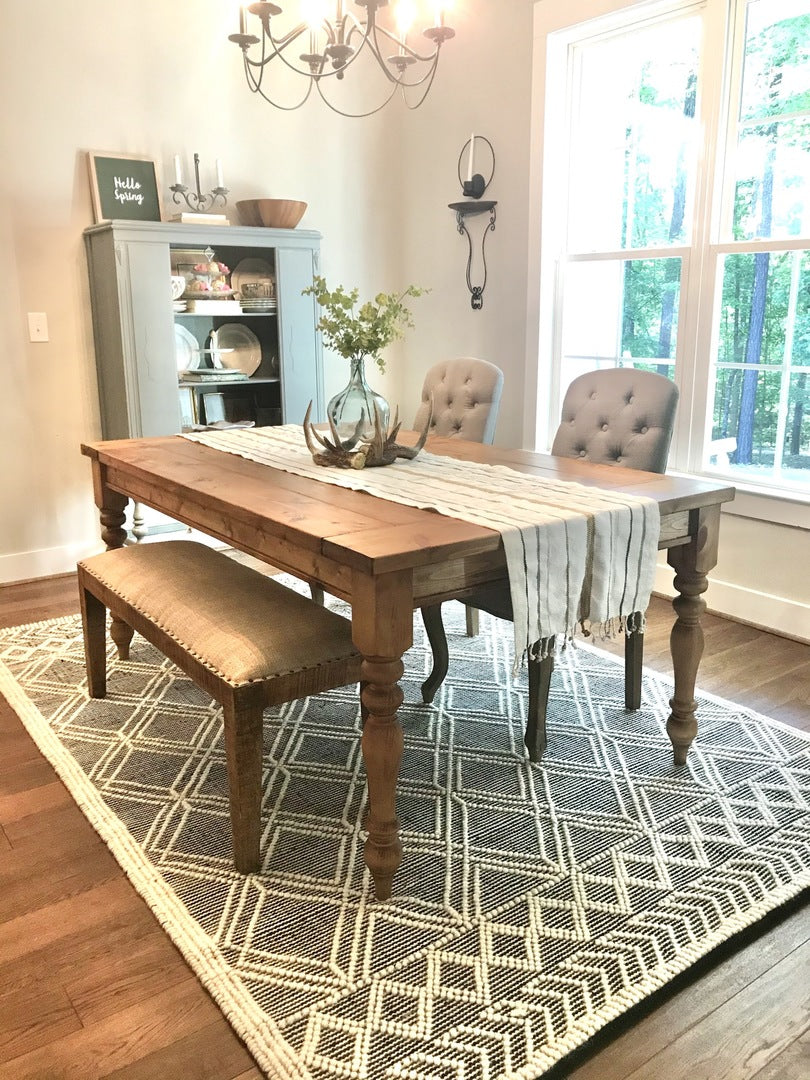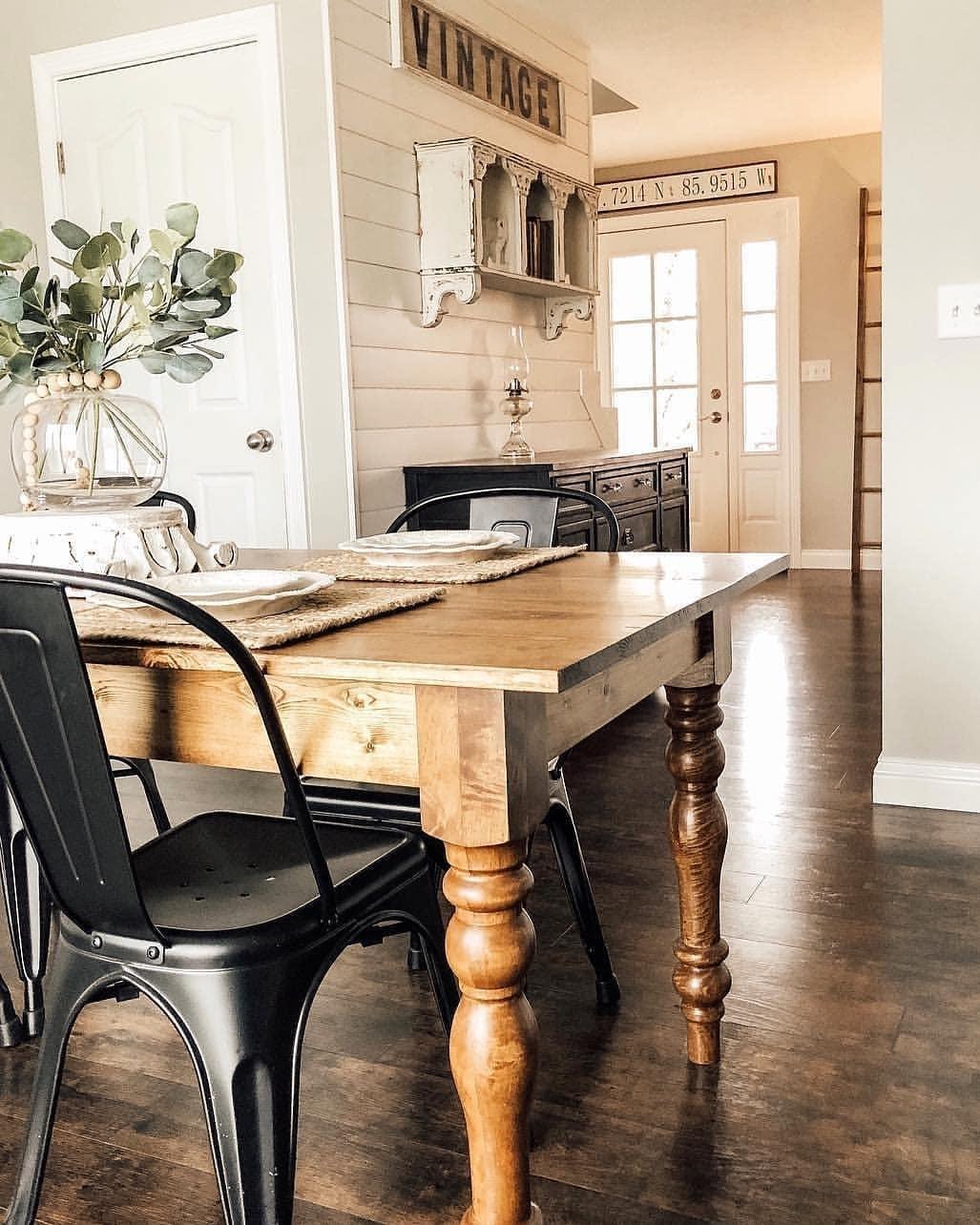Dining Room Table Legs: What to Consider Before You Buy
Dining Room Table Legs: What to Consider Before You Buy
Blog Article
Selecting the Perfect Table: What Styles Job Best for Your Home?
Selecting the ideal table for your home can be a nuanced process that stabilizes aesthetic appeals and functionality. Whether your room leans towards traditional sophistication, modern minimalism, rustic appeal, or industrial trendy, the variety of designs available can accommodate diverse preferences. Each style supplies distinct advantages and challenges that can either improve or interrupt your dining location's harmony. Understanding how different products, shapes, and dimensions communicate with your existing decor is important. To navigate these selections efficiently and discover a table that absolutely matches your home, take into consideration the following elements carefully.
Evaluating Your Room
Evaluating the dimensions and design of your eating area is a crucial very first step in choosing the best table. Begin by gauging the size and size of the room, accounting for doorways, windows, and other architectural features that could influence table placement. This guarantees that your table not only fits however likewise permits comfortable motion around it.
Think about the number of individuals you generally captivate. A table ought to accommodate your home's daily needs while offering sufficient flexibility for occasional visitors. Generally of thumb, allot at the very least 24 inches of table size each to guarantee a comfortable dining experience.
It's also vital to maintain ideal clearance around the table. Preferably, there must be at least 36 inches in between the table side and wall surfaces or other furniture, enabling easy accessibility and movement. For areas where chairs with arms or additional storage space systems like buffets are included, increasing this clearance to 48 inches is advisable.
Lights and environment play considerable roles too. Guarantee that your dining table aligns with existing lights fixtures or strategy for ample lighting services. This comprehensive spatial assessment guarantees that your eating table not only fits literally yet also harmonizes with your area's total capability and aesthetic.
Popular Table Styles

Standard table usually include elaborate details, curved legs, and rich timber coatings, evoking a feeling of ageless beauty. They are ideal for homes with classic decor or those looking to include a touch of refinement to their dining area.
Modern eating tables prioritize simplicity and tidy lines, usually including materials like glass and metal. These tables are ideal for contemporary rooms, supplying a sleek and uncluttered appearance that matches minimalist layout approaches.
Rustic eating tables, on the various other hand, highlight natural products and a handcrafted look - dining room table legs. They commonly feature redeemed wood and a distressed coating, producing a warm and welcoming environment. These tables function well in farmhouse-style homes or those seeking a comfy, natural feel
Industrial eating tables integrate basic materials such as steel and wood, usually showcasing an utilitarian visual. This style is fit for loft spaces or urban areas, including a touch of rugged beauty and sturdiness to the eating experience.
Each style uses distinct advantages, making it vital to pick one that lines up with your home's general style and your personal choices.
Material Options
When picking a dining table, the option of product plays a vital role in figuring out both the table's aesthetic appeals and functionality. Wood, metal, glass, and composite products each deal distinct advantages and obstacles, making it necessary to align the product with your home's style and lifestyle requirements.
Timber is a classic and versatile option, offered in ranges such as oak, walnut, and mahogany. Understood for its longevity and warmth, wood matches both standard and modern insides. However, it requires routine maintenance to stop scrapes and bending.
Metal tables, frequently crafted from stainless-steel, aluminum, or functioned iron, are commended for their contemporary allure and her response effectiveness. They are specifically matched for commercial or minimal setups but can be susceptible to dents and may really feel chilly to the touch.
Glass table bring an air of sophistication and visibility, perfect for smaller sized areas as they produce an illusion of more room. While easy to clean, glass can be susceptible to spots and needs cautious managing to prevent chips and fractures.
Composite materials, such as MDF and plywood, offer affordable and customizable solutions, though they might do not have the durability of natural materials. Selecting the right product guarantees your dining table is both a functional property and an aesthetic pleasure.
Shape and Size Factors To Consider
After establishing the appropriate product for your dining table, the following consideration is picking the right form and size to match your space. Alternatively, see round tables promote a sense of intimacy and are superb for smaller sized dining locations, encouraging discussion by removing corners and making everybody really feel equally consisted of.
Size is just as important and need to be dictated by both the space's measurements and the number of people you intend to seat routinely. As a rule of thumb, allocate at least 24 inches of table width per person to ensure comfy dining. Furthermore, take into consideration the table's clearance room: there ought view it now to go to the very least 36 inches in between the table side and the walls or other furniture. This makes certain that diners can relocate around conveniently without really feeling confined. Expanding tables offer flexibility if you often hold larger celebrations, providing additional seating when required without occupying additional area daily. Choosing the ideal form and dimension makes certain both practicality and aesthetic harmony in your dining location.
Matching Your Decoration
Choosing a table that integrates with your existing decoration is critical in creating a natural and inviting room. Begin by examining your current interior decoration style, whether it be modern, conventional, rustic, or diverse. The eating table should enhance the general visual, not take on it. For example, a smooth, minimal table with clean lines is suitable for a modern-day home, while a vintage, luxuriant table suits an extra conventional setup.
Shade and material are just as significant. If your decoration includes warm tones and natural products, consider a wooden table to boost the organic feel. On the other hand, a glass or steel table may be much more ideal in a space dominated by great colors and commercial elements. Take note of the surface, as it must mirror various other furniture and fixtures to maintain harmony.
Appearance plays an essential function also. A rough-hewn, recovered wood table can add personality to a rustic area, while a sleek marble surface area can elevate an extravagant eating area. Consider the range and percentage of the table in connection to the space size and existing furnishings. A well-matched eating table not just improves visual allure yet additionally enhances the general dining experience.

Conclusion
Selecting the optimal dining table requires cautious consideration of space, style, materials, shape, and dimension. Standard tables complement traditional interiors with rich timber coatings, while modern-day tables fit contemporary settings with glass and steel.
Report this page